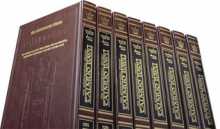In the modern day we take the practice of non-geographic religion for granted. While there are still a few so-called "holy cities" left in the world, there is no such thing as a religion that is bound to any one locus. In ancient times, the inverse was true. Few religions that existed two to three thousand years ago could be fully observed in literally any location. Polytheistic faiths, like those practiced by the Greeks and Romans, were dependent on temples and the priests who were bound to them, mobile only insofar as an individual's ability to properly build an altar or in the form of quasi-religious Mystery cults. This was even further pronounced in the earliest Near Eastern cities where the worship of a particular god came and went with the city itself. It's not entirely certain how mobile the earliest incarnations of Judaism were, but by the time the Judaic kingdoms in Canaan were established, Judaism was solidly anchored to the Temple in Jerusalem. It was only after two periods of exile that Judaism became a traveler's religion.
The two greatest written traditions in Judaism came about thanks to periods of conquest and diaspora. First, the Babylonian Empire consumed the Levant and forced the Jews of Canaan to live elsewhere in Babylon, removing them from their national seat of power and culture for the sake of political stability. Faced with the task of maintaining Jewish culture without the benefit of a Temple or a priestly leadership caste, Jews began writing down their stories in what would eventually become the Tanakh, the written Five Books of Moses. It is from this tradition that today's Torah scrolls originate. It wouldn't be until the destruction of the second Temple in Jerusalem by the Roman Empire in 70 CE that the Talmud would come into being.
After 70 CE, Judaism shifted away from Temple-based worship almost entirely. The Cohanim (the priests who oversaw all sacrifice and, for a time, acted as supreme judges) ceased to be relevant to everyday Jewish life in the diaspora and were ultimately replaced as community leaders by the rabbis, learned individuals who act more as teachers and counselors than as holy men. The rabbis transformed the format of Jewish religious discourse from a purely spoken discussion to a written, compiled commentary. This transition didn't exactly begin at the Roman conquest. Rather, it was a natural evolution from the Judean system of courts and sages that came about approximately two centuries earlier. The texts we know today as the Talmud slowly came into being in this post-Cohanim period.
In its simplest definition, Talmud (which roughly translates as "teachings") is a series of scholarly discussions and commentaries posited by certain highly regarded rabbis over the course of several generations. It is the basis for most rabbinic law and many of the customary practices of modern Judaism. The most important thing to remember about Talmud is that it is not an end-all work of law. Rather, it is a compilation of the informed opinions of people who went about Biblical exegesis with academic rigor. Different sages express different interpretations of the same passage and none of them are deemed absolutely correct. At best, Talmudic texts display a consensus of opinion. It is not meant as a replacement or final conceptualization of Torah. Rather, it is a method with which Jews can understand the practice of their faith without deferring to an ultimate authority that is subject to change capriciously.
